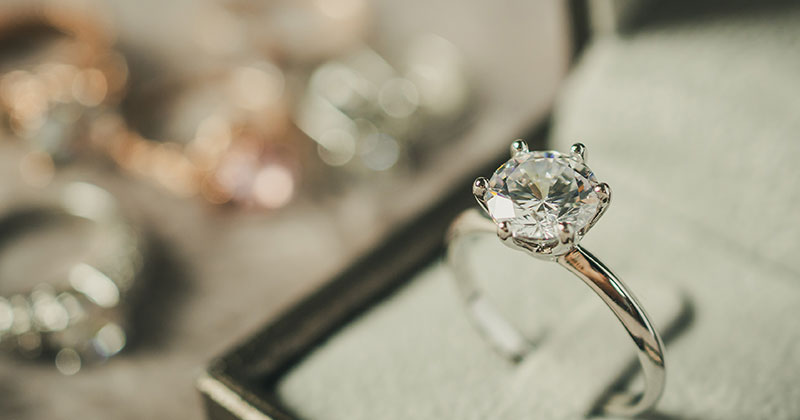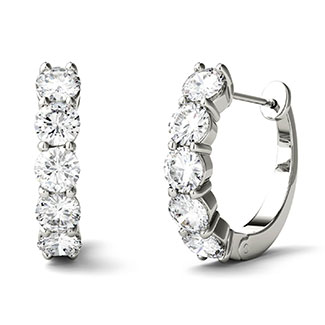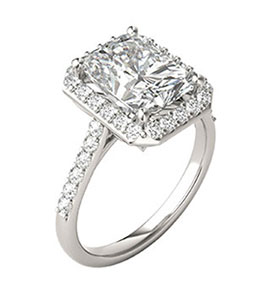
It’s a big, blingy rock in an engagement ring. But is it a diamond? Or possibly moissanite, a gem that bears an uncanny resemblance to diamonds?
What is Moissanite?
Moissanite is a naturally occurring silicon carbide whose microscopic particles were discovered by French chemist Henri Moissan at the Canyon Diablo meteorite strike site in Arizona just over a century ago. At the time, Moissan thought he’d discovered diamonds, but later found that the crystals were composed of silicon carbide, not diamond-forming carbon.
While natural moissanite exists, it’s ultra-rare, so all moissanite gems you see for sale are laboratory-created. How else does the gem differ from diamonds? Let’s dive into the moissanite vs. diamonds equation:
Moissanite vs. Diamond
Origins
Diamonds grew deep in Earth’s crust millions of years ago (fun fact: all of earth’s diamonds are at least 990,000,000 years old), formed from carbon exposed to extreme temperatures and pressure. Moissanite is grown in controlled labs using a thermal growing process. Scientists create silicon carbide crystals that are identical to those in natural moissanite, and the growing process if complex: it takes two to three months to create a single moissanite gemstone.
Hardness
Moissanite gemstones are nearly as hard as diamonds—they are a 9.25 on the Mohs Scale (which measures gemstone hardness), while diamonds are a perfect 10. Both boast high wearability; neither gem is likely to chip or crack.
Affordability
Carat-to-carat, moissanite gems costs much less than diamonds. To give you an idea: a 1ct. Super Premium moissanite solitaire engagement ring hovers around $2,000, while the same ring with a good quality diamond center stone would cost upwards of $4,000.


Moissanite ring and earrings courtesy of Charles & Colvard
Color
As diamonds are naturally occurring, they can run the gamut from colorless to brown. Moissanite is also seen as “colorless,” but the gemstone often has a greenish or yellowish tint. Moissanite also comes in gorgeous hues of blue, green, grey, and yellow. Diamonds, too, come in a plethora of colors, including pink, yellow, and blue (and colored diamonds are expensive). Moissanite has a higher refractive index than a diamonds, and in sunlight it casts a rainbow of colors, whereas diamonds cast a whiter light, which includes a smaller rainbow effect. As moissanite stones gets bigger, the rainbow cast becomes more pronounced.
Grading
How do you know if you’re getting a high-quality diamond or moissanite? Moissanite is graded solely on color, which the most colorless moissanites rating the highest. When shopping, look for Premium (nearly colorless) and Super Premium (colorless) moissanites to nab the best. Diamonds are rated based on the so-called 4Cs: cut, color, clarity and carat (see the Gemological Institute of America’s 4Cs chart).
Bottom line:
Buy what you like. Is stone size more important to you than the classic diamond sparkle? Do you love moissanite’s disco ball cast? Do you want to pass down a diamond to your daughter/niece? Only you know the answers to these and other pertinent questions. Do you!
Whichever route you take, make sure your precious purchase is insured! Jewelers Mutual Group insures both diamond and moissanite jewelry, which means your piece will be protected by our comprehensive repair or replacement coverage. Click the button below to check your rate.
